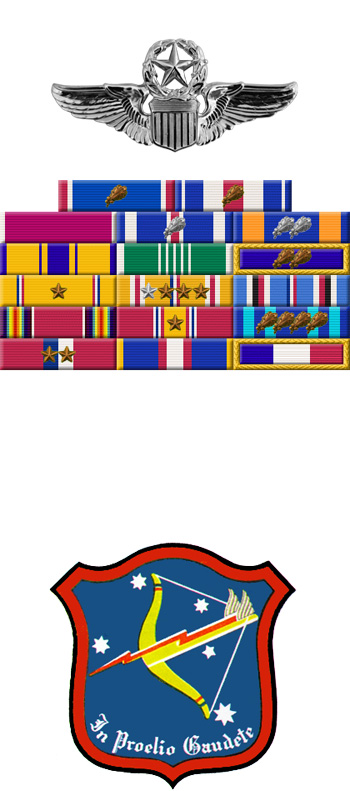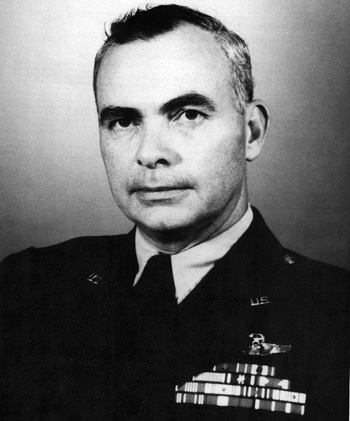
|
Charles H. MacDonald |
 |
|||
| Rank, Service | ||||
Colonel O-6, U.S. Air Force |
||||
| Veteran of: | ||||
|
||||
| Tribute: | ||||
Charles MacDonald was born on November 23, 1915, in Dubois, Pennsylvania. He served in the U.S. Naval Reserve from June 28, 1933, to June 27, 1937, and graduated from Louisiana State University in 1938. MacDonald enlisted in the Aviation Cadet Program of the U.S. Army Air Corps on June 28, 1938, and was commissioned a 2d Lt and awarded his pilot wings at Kelly Field, Texas, on May 25, 1939. His first assignment was with the 79th Pursuit Squadron of the 20th Pursuit Group at Barksdale Field, Louisiana, from May 1938 to May 1939, followed by service with the 21st Pursuit Squadron of the 35th Pursuit Group at Hamilton Field, California, from May 1940 to January 1941. Lt MacDonald next served with the 44th Pursuit Squadron of the 18th Pursuit Group in Hawaii from February to September 1941, and then with the 19th Pursuit Squadron of the 18th Pursuit Group from October 1941 to September 1942. Capt MacDonald returned to the U.S. in September 1942, and commanded the 340th Fighter Squadron of the 348th Fighter Group at Westover Field, Massachusetts, from November 1942 to September 1943. Maj MacDonald deployed to New Guinea in October 1943, and served as the Executive Officer of the 475th Fighter Group until November 1943, when he became commander of the group. Col MacDonald served as the commander of the 475th Fighter Group from November 1943 to July 1945, during which time he was credited with the destruction of 27 enemy aircraft in aerial combat plus 2 probables and 4.5 damaged. After the war, he served as a liaison officer at the Pentagon from October 1945 to August 1948, and then attended Air War College at Maxwell AFB, Alabama, from August 1948 to July 1949. His next assignment was as commander of the 33rd Fighter Group at Otis AFB, Massachusetts, from July 1949 to June 1950, followed by service on the staff of Continental Air Command from June 1950 to January 1951. Col MacDonald was commander of the 23rd Fighter Interceptor Wing at Presque Isle AFB, Maine, from January 1951 to February 1952, and then served as commander of the 4711th Defense Wing at Presque Isle AFB from February to July 1952. After completing Strategic Intelligence School and the Foreign Service Institute, Col MacDonald served as Air Attache to Sweden from May 1953 to July 1956. He attended the National War College in Washington, D.C., from July 1956 to June 1957, and then served as an instructor at the National War College until August 1959. Col MacDonald's final assignment was with the 25th Air Division at McChord AFB, Washington, where he served as Vice Commander and then Deputy Chief of Staff for Operations from August 1959 until his retirement from the Air Force on August 1, 1961. Charles MacDonald died on March 3, 2002. |
||||
|
||||

